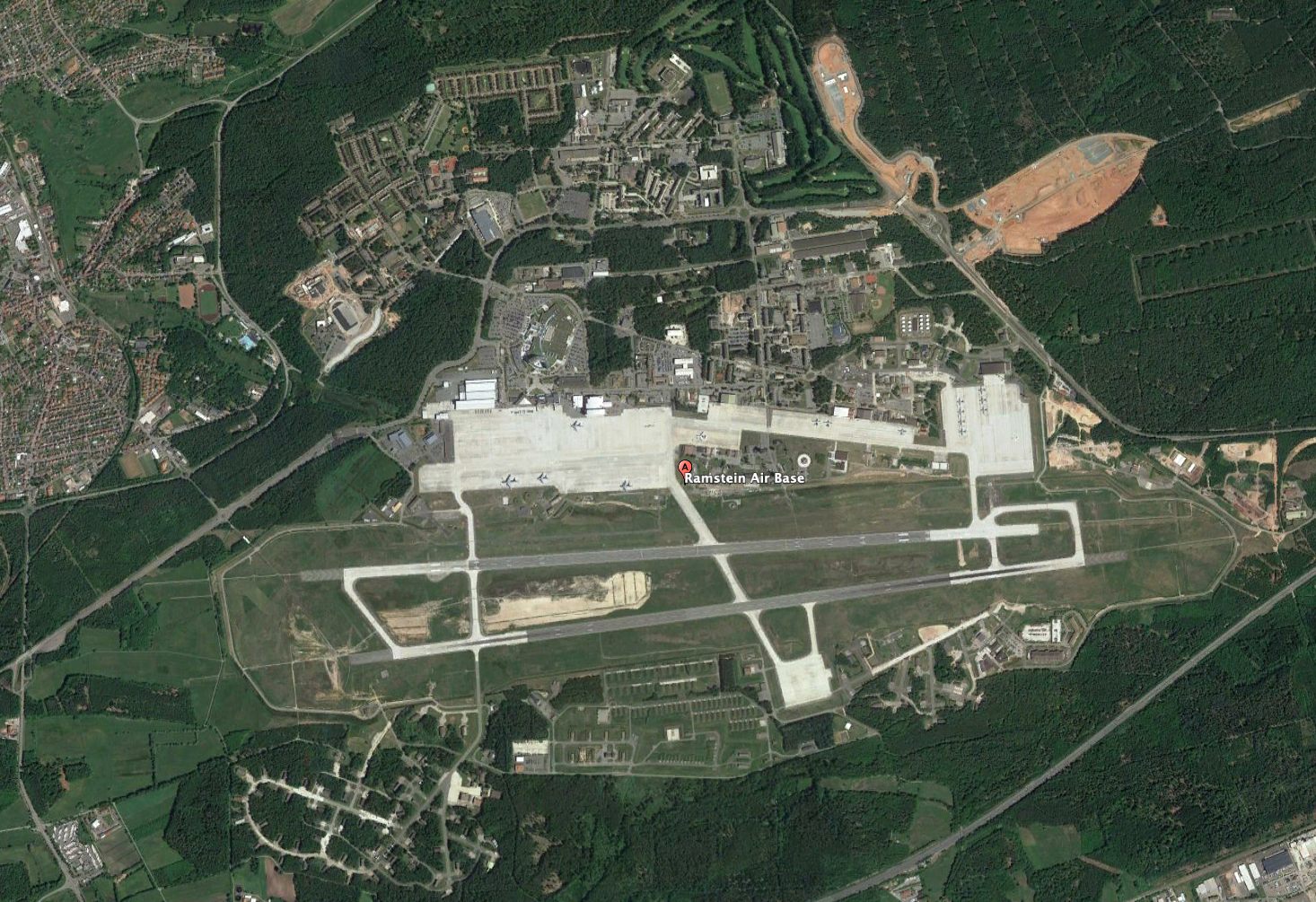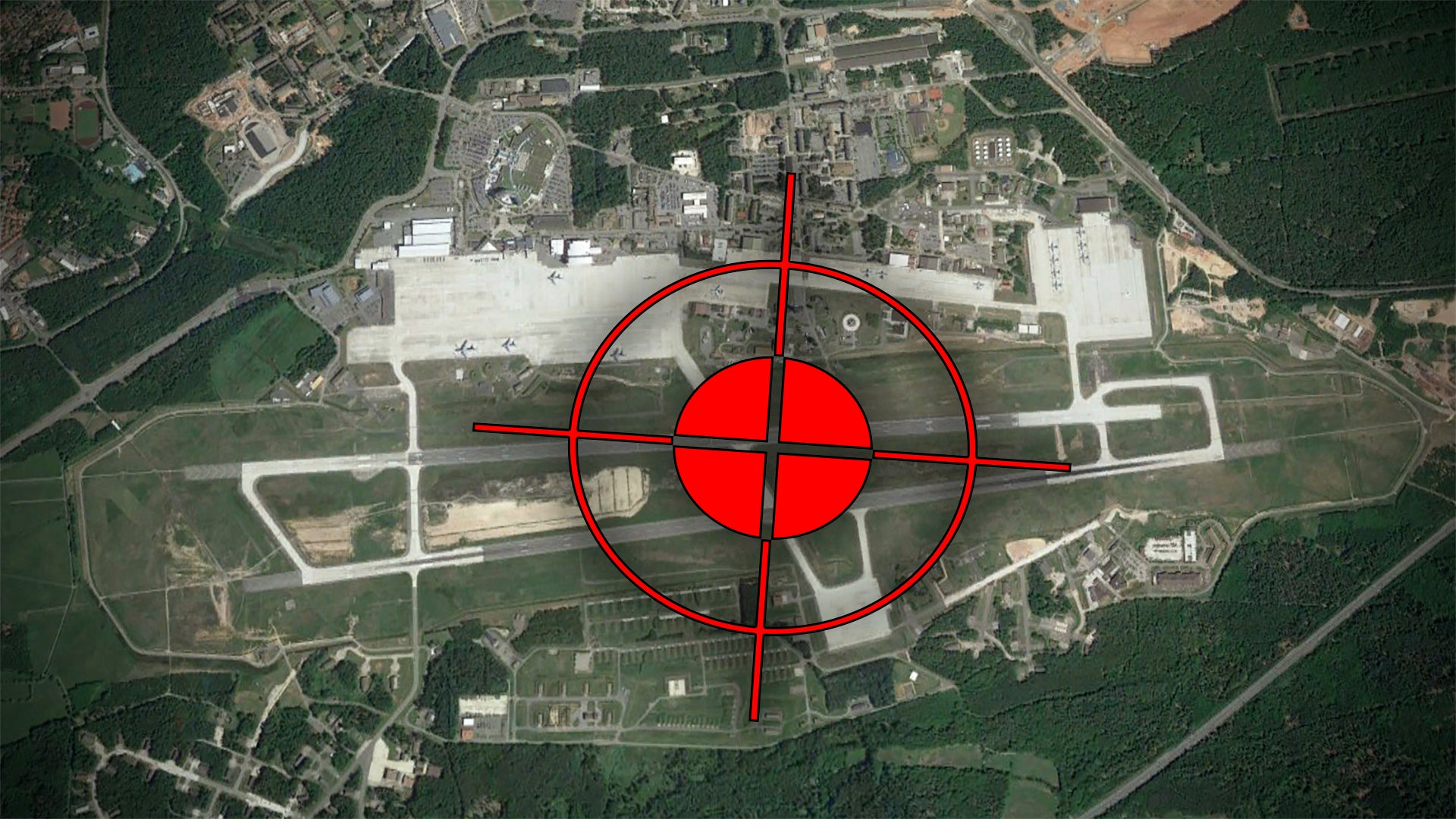In a seemingly odd sequence of events today, The War Zone was made aware that Ramstein Air Base in Germany, America’s massive central European military hub, alerted its personnel of a potential incoming missile strike. After the strike never materialized, the sprawling installation’s command post put out a notice stating that “the missile launch was then assessed to be part of a training exercise” and wasn’t deemed a threat to the base.
You can read the entire message below:
“Attention Team Ramstein, Today, the Ramstein Air Base Command Post was notified via an alert notification system of a real-world missile launch in the European theater. The Command Post followed proper procedure and provided timely and accurate notifications to personnel in the Kaiserslautern Military Community. The missile launch was then assessed to be part of a training exercise and not a threat to the KMC area. The situation is all clear. We’d like to thank our Command Post members for their quick response to ensure our people stay informed so they can take the proper safety precautions.”

Details about the strange event remain extremely limited at this time, but the base is considered a prime target for potential foes. Russia, in particular, has ballistic and cruise missiles located nearby in Kaliningrad and throughout the western edge of its border with NATO member countries. This is in addition to sea and air-launched cruise missiles that can be launched from as close to Germany as the Baltic Sea. Of course, Russia’s strategic ballistic missile forces can reach Germany from thousands of miles away, as well.
In addition, Iran, with its ever increasingly capable long-range ballistic missiles, has long been a concern for the U.S. and its European allies and was the driving factor in establishing an anti-ballistic missile screen in the form of two Aegis Ashore sites in Eastern Europe.
Still, we have no idea what early warning system triggered the alert. America’s infrared early warning space-based sensing layer stares at the earth from many vantage points in orbit day and night. Historically, it provides the initial warning of a ballistic missile launch via detection of the missile’s hot boost-phase plume. These satellites, especially the newer ones, can also detect a greater variety of infrared events, as well, including artillery fire, aircraft crashes, smaller missile shots, and even the launches of cruise missiles.
There are also many radars scattered throughout the entire region that support the missile defense ecosystem as part of NATO’s larger integrated air defense network. Furthermore, Ramstein is home to the Alliance’s Headquarters Allied Air Command (HQ AC), which incorporates air and missile defense, and the space-based and radar early-warning information that the air defense network relies upon, into a major command and control nerve center.

It is worth noting that usually, outright declarations by foreign adversaries or other forms of intelligence give America’s command and control ecosystem early warning of exercises involving ballistic missile launches so that they don’t trigger these types of alerts. It would seem that it is quite possible that there was no prior intelligence, or at least it wasn’t definitive, pointing to such an exercise in this case. You can get an idea of what an undeclared or unexpected launch is like at U.S. Strategic Command (STRATCOM) headquarters in this past piece of ours.
While this instance turned out to be an nonthreatening event, it does underscore just how alert U.S. forces in Europe are to a potential sneak missile attack in these turbulent times. So, the system actually worked, at least when it came to initial warning and the base taking the threat seriously. As to how well the denizens of the installation followed instructions, or how effective the individual warning system was, is unknown. But this instance will surely serve as a great case study for evaluating potential shortfalls in those procedures.
As to who initiated the ‘training exercise” launch that caused the alarm, and why, we don’t know at this time. It is known that Russia has been executing a massive set of strategic exercises in recent days that are focused on its nuclear deterrent capabilities and readiness. This included four ballistic missile launches from one of its submarines off the far east, in the Sea of Okhotsk, just today. Those missiles would have been heading west, towards Europe, into a target area in Russia’s northwestern Arkhangelsk region.


While the timing and nature of this test are intriguing, we don’t know if this dramatic four submarine-launched ballistic missile test by Russia, or any other, triggered the event. It is also possible that an allied drill could have also been confused for an unknown launch from within the European theater. We just don’t know at this time.
Considering the sensitivities when it comes to the collection of this type of early warning data, we may never know exactly how this began or how serious the situation became.
Regardless, we have reached out to U.S. European Command and Ramstein Air Base for more details. We will let you know what we find out as soon as they get back to us.
Update: 12/14/2020:
The main Public Affairs Office for U.S. Air Forces in Europe (USAFE), which is headquartered at Ramstein, responded to our queries asking for additional information about this incident with the following statement:
“USAFE-AFAFRICA received an alert via a warning notification system of a real-world missile launch. The control center followed proper procedures and acted in a timely manner to provide rapid and accurate notifications to all required personnel and triggered the AtHoc notification system. The missile launch was determined to be part of a training exercise and within minutes the control center again followed proper procedures and provided updated notifications. We consistently and routinely monitor for any threats to our forces and our allies.”
This is effectively identical to the statement that Ramstein Air Base officials posted on Facebook on Dec. 12.
U.S. European Command (EUCOM) has also told The War Zone that it “does not have anything to add at this time” and recommended reaching out to the Public Affairs Office at Ramstein “for any additional details.”
Additional details have emerged about what some personnel experienced at Ramstein Air Base during the incident. “Aerial attack, aerial attack, seek cover, seek cover,” the public address system blared, after sirens went off, according to a report from Stars and Stripes.
“Take immediate action!” a text alert also read, according to We Are The Mighty. “For further information refer to Airman’s manual.”
Approximately two minutes after the text went out, an “all clear” message was issued, that story added.
“That’s not the kind of thing you joke about,” one service member subsequently told We Are The Mighty. “Hasn’t 2020 been hard enough?”
The alert “made my heart skip a beat for a second” one commenter said in response to Ramstein’s official Facebook post. “Me too I ran into the [base exchange] and started yelling at folks to take cover,” another said.
Contact the author: Tyler@thedrive.com
